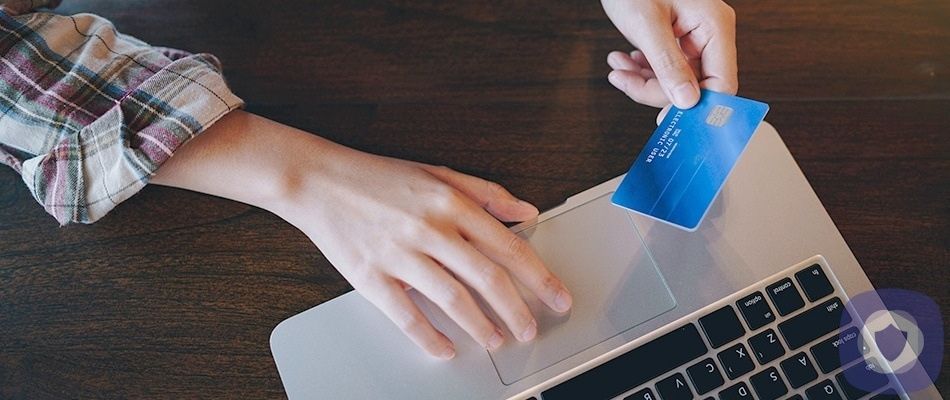Thanks to the advent of the internet, shopping has never been more convenient. With just a few taps or clicks, you can buy anything from a car to crayons and have it delivered right to your front door without ever leaving the comfort of your couch. However, online shopping does come with some risks, especially around the holidays when shopping ramps up significantly, and cyber criminals ramp up their identity theft efforts accordingly.
According to the U.S. Department of Homeland Security, there are three primary ways criminals target online shoppers:
- They create bogus, scam websites and send out emails to lure you into providing personal information and financial details.
- They steal your information as you’re making a legitimate purchase from a vendor whose site isn’t secure.
- They infect your computer with viruses or malware so they can gain access to all your information.
Scary stuff. The good news is that there are steps you can take to shop and pay safely online for the things you want. Here are eight precautions you should take to make your online shopping as safe as possible:
1. Shop from reputable sites
Finding new and unique products and places to shop is great, but if you’ve never heard of a company—especially one that’s offering what seems to be an unbelievably low price on things— do your research before you dive in and make an online purchase from them. Sometimes criminals set up bogus sites in order to steal your personal information.
Check online reviews on sites like Yelp and with organizations such as the Better Business Bureau. You can also check to see if the product is also sold on large, established shopping sites like Amazon. Also, make sure retailers provide a privacy policy on their website that states exactly how the information you provide will be used.
2. Check to see if the site’s URL has an HTTPS or an HTTP
When looking at the address in your web browser (the URL), it starts with a series of letters—usually http or https: Though they are similar, that “s” at the end (or lack thereof) makes a big difference. The “s” being present in the url is a sign that the site encrypts your information, meaning it’s scrambled into a code that’s difficult to decipher. Remember “s” stands for secure. Another way to tell if a site is secure is if there is a closed lock symbol in the URL bar (usually on the left-hand size) or at the bottom of the window, depending on your browser. While these two details aren’t a 100-percent guarantees against fraud, they provide an extra level of security you want when shopping online.
3. Don’t provide financial information via email
Even if you’ve made a purchase with a company previously, don’t provide them with any financial information via email—not to confirm your payment, verify your order or for any other reason. If you receive an email asking for financial information, call the company directly (look up the contact information independently not through a link in the email) to confirm its validity and make other arrangements to provide them with the information they need if the request happens to be legitimate. Note, however, that the chances of such a request being legitimate are almost nonexistent as reputable companies won’t make such requests via email.
4. Do not online shop while using public Wi-Fi
Public Wi-Fi is handy no doubt, especially if you’re on a limited data plan and looking to save data whenever you can. Unfortunately, using those public hotspots can be dangerous as most systems aren’t entirely secure, not to mention the fact that people could be looking over your shoulder.
If you must use public Wi-Fi, don’t log into your bank account or into other sites with your personal information, and save your online shopping for when you’re on a trusted virtual private network. Even if you just browse the news and social media sites, you’re still vulnerable to hackers slipping malware onto your computer and otherwise spying on what you’re doing, so avoiding public hotspots in general is the safest bet.
5. Use anti-virus software
Anti-virus software is an important tool to help protect your computer from being attacked by crooks. If you’ve already installed it, that’s a good first step, but you also must update it regularly to prevent the latest and greatest attacks, which are continually evolving.
6. Don’t use your debit card
While most credit cards offer fraud protection and will reimburse you for any fraudulent purchases, most debit cards don’t offer that same protection. Also, since your debit card is linked to your checking or savings account, if a criminal wipes your account out, it could leave you unable to pay bills, automated payments may bounce and you could find yourself in one big financial mess.
You also may want to consider using apps like Apple Pay, Google Wallet or PayPal, which add an extra layer of security to purchases as well. Known as payment gateways, they provide a one-time code for payment rather than your entire credit card number so that if hackers get into a retailer’s site, your information isn’t at risk.
7. Use strong passwords and/or a password manager
Keeping track of the passwords for all your accounts can be overwhelming, but don’t take the easy way out and use the same one for multiple sites. That makes things way too easy for hackers to swoop in and wreak havoc on all your accounts at once. Instead, consider setting strong passwords (at least 8-10 characters with special characters that are NOT the name of your kids, spouse or street on which you live—nope, not even backwards!) and/or use a password manager to generate and organize your passwords. Don’t forget to change your passwords regularly too!
8. Keep records of your online purchases
When you make a purchase, keep the receipt and verify the amount deducted from your bank account is the same you agreed to pay. You’ll also likely need those receipts if you need to make any kind of claim against fraudulent charges. Make sure to check your accounts regularly as well to look for any signs of fraud, as the sooner your address any issues, the less damage criminals can do.
The final word on safe online shopping
While there are certainly threats, that doesn’t mean you have to avoid online shopping altogether. Advancements in technology and efforts by retailers consistently make shopping online safer, but consumers still must still take precautions. So, as you shop this holiday season and all year long, make sure you take a few extra steps before you make purchases to avoid extra headaches down the line.
This article has been reviewed and approved by Officer Banta.

Officer Banta is the official SecurityNerd home security and safety expert. A member of the Biloxi Police Department for over 24 years, Officer Banta reviews all articles before lending his stamp of approval. Click here for more information on Officer Banta and the rest of our team.

